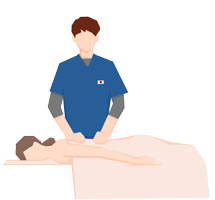persistent slight fever, dizziness, staggering feeling, palpitation, difficulty in breathing deeply
【female, 70s】
【female, 70s】



【female, 70s】
【female, 70s】
dizziness, slight fever, and stagger.
palpitations are also strong. unable to take deep breaths.
she went to various hospitals.
she had CT and blood tests, but there was nothing remarkable about her. the doctors said she had autonomic dysreflexia, but they never suggested any effective treatment.
she always feels dizzy and staggered.
recently, she has been in a bedridden position.
slight fever that lasts for a long time.
sometimes it is about 38℃. the temperature may be lowered by sweating.
when she moves her head, she feels dizzy and stagger.
in the past, she was unable to take deep breaths and had hyperventilation-like symptoms.
she has been taking Chinese medicine for palpitations, but there is no improvement. she has chest pain at night.
sometimes she feels dizzy, as if the ceiling is spinning.
many tests were done, but nothing was found to be the cause.
a family member said, "could it be caused by a stiff neck? so, she came to our clinic and found us.
on visual examination, she was walking without moving her neck to stabilize her neck.
she felt dizzy and had difficulty walking, and her face was pale.
palpation showed excessive tension in the neck muscles and back.
the 1st treatment was to remove the skin tension using thin acupuncture needles because of the strong skin tension.
1st to 3rd treatment: skin tension was removed, and her face color returned.
4th to 6th treatment: low fever disappeared. at the same time, various symptoms such as dizziness and staggering decreased by half.
7th treatment: continuing treatment now. there are waves, but the dizzy feeling is almost gone and is heading for improvement.
